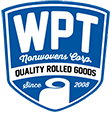Manufacturers have a wide range of fiber options when specifying nonwoven fabrics for the products they produce. While some applications are great for natural fibers like cotton, others might be better served with synthetic fibers such as polyester. When considering fibers, it is important to compare the attributes of a given fiber in light of the fabric characteristics you want your final product to have.
When choosing the nonwoven fiber for your application, there are five key fiber characteristics that should be considered:
1. StrengthIf strength is an important feature for your finished product to have, synthetic fibers offer high tensile strength. High strength synthetic fibers can be blended with weaker fibers to create a durable bicomponent fiber nonwovens. Polyester filament or a polyester blend fiber are a great choice for strength because polyester nonwovens offer high density. Nonwovens that require strength include those used for medical and hygiene products, construction materials, telecom products, agricultural fabric, and more.
2. Temperature ResistanceA variety of fibers including cotton, rayon, polyester, and blend can be used to create nonwovens with resistance to temperature. Chemical bonding is highly effective for developing temperature resistant nonwovens. The process of chemical bonding involves the application of a chemical binder to join polyester and rayon fibers to impart unique and beneficial characteristics to nonwovens, such as temperature resistance.
3. ShapeFor products that need to retain their shape, without shrinking, stretching, or creasing, polyester fibers offer the best option. Chemical bonding and bicomponent fibers can also be beneficial to impart characteristics such as resistance to washing or dry cleaning, resistance to aging, as well as superior flexibility and handling.
4. AbsorbencyFor the characteristics of superior absorption and release, with a high degree of comfort and softness, cotton fiber is a great choice. Rayon filament or rayon blend are natural fibers derived from wood pulp, that offer high absorbency, softness, and comfortable finish. Nonwoven cotton and nonwoven rayon are ideal materials for a hygienic application needs including cosmetic wipes, baby diapers, adult incontinence products, hygiene products, cleaning wipes, medical bandages, equine bandages, and more. When durability is also required, other types of fibers can be treated or blended to create a hydrophilic nonwoven.
5. SustainabilityNaturally occurring fibers are the best choice for sustainable nonwoven products. Though natural fibers are considered to be more expensive, they can be made in a way that makes them very competitive with synthetic fiber products if you choose a supplier that is experienced in developing environmentally friendly nonwovens. As governmental regulatory pressures concerning the environment increase, manufacturers in a variety of industries are switching from synthetic fiber nonwovens to compostable or biodegradable fiber environmentally friendly and sustainable nonwovens.
Wherever a need exists for a particular nonwoven material, no matter the industry or the application, WPT Nonwovens has the experience, equipment, and development capabilities to get the job done. Call us to discuss your project or request a quote today!

